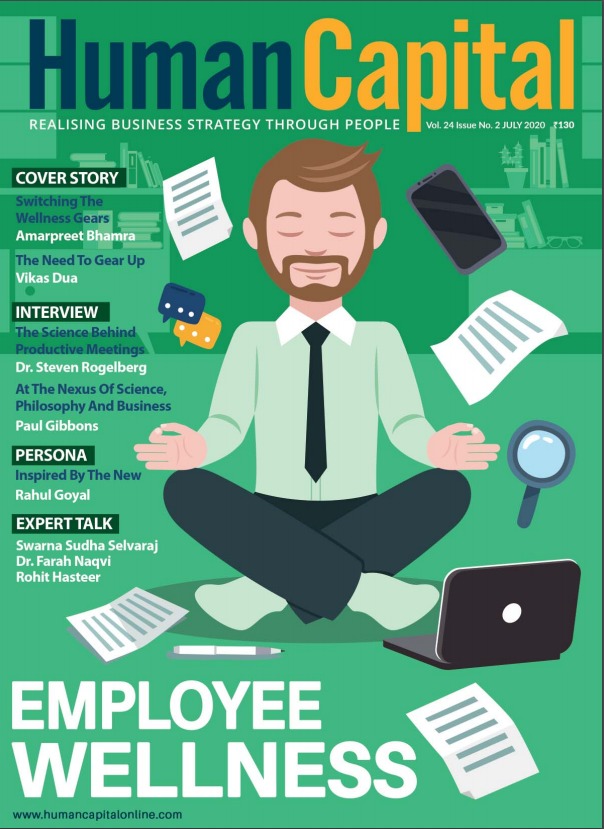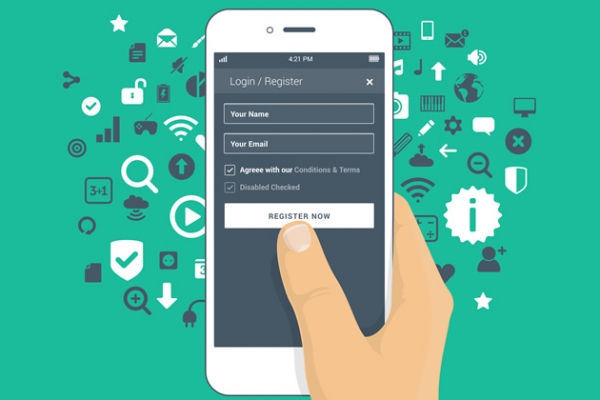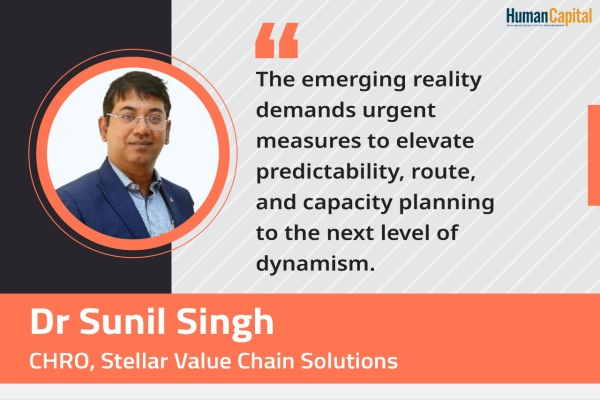Evolving technology has worked to simplify several mundane tasks for mankind. Be it online booking or smart homes, technology has enabled human beings to impart more time and energy on activities that require higher cognitive abilities. This apart, with the expansion of internet (both wired & mobile) over the years, thus rendering it affordable and dependable, there has been higher adoption to internet-based tools. It is estimated that in only three years since 2014, the utilisation of mobile data has grown 15 times.
The key reasons for such data consumption are affordable smartphones and cheaper data tariffs. In addition to this, an increase in the number of millennials entering the workforce, who obviously consume more mobile content than their predecessor generations, also attribute to greater data consumption. And, this could well be the proverbial tip of the iceberg, as some reports suggest that the monthly data consumption on every smartphone in India is estimated to grow from 3.9 GB in 2017 to 18 GB by 2023.
One of the key areas of technology impact has been the way organisations do business. On the one hand, technology has made work faster and simpler, while on the other, the advent of the millennial workforce has meant that organisations need to explore alternative platforms for onboarding and engagement.
In Quotes “On the one hand, technology has made work faster and simpler, while on the other, the advent of the millennial workforce has meant that organisations need to explore alternative platforms for onboarding and engagement.”
Redefining onboarding and engagement
It is an established fact that the onboarding experience of an employee has an important role to play in the employee’s tenure in the organisation. On the contrary, 69% employees are likely to stay with a company for three years if they are provided with a first-class onboarding experience.
Morever, it gains credence to differentiate between orientation and onboarding. While orientation is all about sharing organisation-centric information which is accomplished in a single day, onboarding is more long term and strategic in nature and can even go on for three months.
Onboarding involves and is not limited to: -
1. Knowing about the job
2. Shadowing a peer
3. Learning on the job and regular interactions with the manager
While some of the above require a more face to face interaction, some can be delivered digitally. For instance, feedback regarding employee experience in the first week can be captured digitally through a mobile app and the information appropriately used during the catch up by the line manager. The benefit would be two-fold:
1. Ensure that in person conversations are more meaningful and address any queries / concerns promptly
2. Provide evidence and reinforcement to the employees that their views / opinions are being heard on the spot and that they do not have to wait to get their voices heard (this is important for the millennials since they are believers of instant actions and decisions).
Similarly, real-time feedback surveys are great tools to create engagement. Here again engagement needs to be viewed as an outcome rather than an objective in itself. This means that a great employee experience eventually delivers great employee engagement, and, the onboarding journey is an important component of employee experience.
However, specific initiatives/activities are also undertaken by the organisation to understand the engagement levels of employees. Often, they are known as employee engagement surveys or people surveys. One of the simplest ways to digitise the process is to use online surveys (E.g. Monkeysurvey, Qualitrics) instead of ones that are paper‑based.
However, the next phase of digitalisation process is when the data availed from the survey is utilised to draw insights about employee opinions, and, action plans get prioritised. This is where the continual use of digital tools will help in offering a seamless experience. Some commonly used onboarding tools by various organisations in India are Capterra, Tydy, APPcues, Walk me etc. A few apps / tools are also cloud enabled which means that the entire journey is actually on a remote server, and participants only login using the internet. Such kind of tools / apps have an inherent benefit of needing less customisation and installation process since they are cloud based. The use of technology has been effectively implemented in several organisations in the onboarding and engagement domain.
Features of Mobile Onboarding and Engagement

Advantages of Mobile Onboarding and Engagement
1.Delivered digitally and therefore is person independent
2. Higher degree of consistency of experience
3.Standardised content yet delivered in a personalised manner
4. Opportunities of gamification in the user journey creating an excitement and engagement to the organisation
5. Can be customised to start engaging with new recruits before their actual joining in case of onboarding tools
6. Creates positive views amongst audience through digital platform (research shows that organisations with greater digital tools tend to receive more positive reviews by employees)
7. Is often the preferred medium of interaction for millennials and therefore helps in connecting with the audience faster
8. Interaction happens real-time with feedback and updates happening faster. Opportunity to seek views / feedback on the spot and not wait for once / twice a year surveys
9. Encourages peer / social learning without the worry of feeling shy about asking a question
10. In case of engagement tools, communities / groups help in free flow of information and exchange of ideas
11. Offers the flexibility of personal flexibility (e.g. can be used at the user’s convenience of time and place)
Features of a good onboarding and engagement tool
1. User friendly: The tool must essentially be user friendly. The purpose of moving to a digital tool is to make the process and experience simpler, and therefore, this should be the most important aspect
2. Easy integration: The tool should be able to integrate easily with the existing organisation system (ERPs like SAP, Oracle etc). Nothing creates nigger disappointments than a digital tool that stutters from time to time due to synchronisation challenges
3. Simple upgradation: Upgrades to the system (as required by the organisation) should be easy with limited downtime
4. Platform agnostic: The tool needs to be platform independent (an organisation might be using one platform today, but might migrate to another later. At that time, the tool should be able to move to new platform easily as well)
5. Mobile enabled: Given that the tools need to be mobile enabled (in the form of an app), it should be available on prominent mobile app stores (App Store (iOS), GooglePlay etc.)
6. Consume limited resources: The app / tool should be able to operate while consuming less resources (including data, memory and data speed – the last one is important for the app to work flawlessly even in low connectivity areas)
.png)
While it is true that the fourth industrial revolution is the era of technologies like the internet and digital workforce, it is worthwhile to note that these are tools which enable a larger cause (in this case better employee experience), and therefore, the tools are more a means to an end. The quality of human interactions eventually leads to a truly best in class experience in the case of onboarding which is also a contributor to engagement.
In Quotes “While it is true that the fourth industrial revolution is the era of technologies like the internet and digital workforce, it is worthwhile to note that these are tools which enable a larger cause…”
Has COVID-19 forever changed the way we live and work?
Trending
-
SBI General Insurance Launches Digital Health Campaign
-
CredR Rolls Out 'Life Happens' Leave For Its Employees
-
Meesho Announces 30-Week Gender-Neutral Parental Leave Policy
-
Microsoft Unveils Tech Resilience Curriculum To Foster An Inclusive Future
-
60% Indian Professionals Looking For Job Change Due To COVID: Survey
-
SpringPeople And Siemens Collaborate For Digital Transformation Push
-
86% Professionals Believe Hybrid Work Is Essential For Work Life Balance: Report
-
Almost 1 In Every 3 People's Personal Life Affected Due To Work Stress
-
Meesho Rolls Out Reset And Recharge Policy For Employees
-
80% Of Talent Leaders & Academics Say Pandemic Changed Skill Needs For Youth: Report
-
Hero Electric Rolls Out 'Hero Care' Program For Employees
-
Human Capital In Collaboration With ASSOCHAM Hosts Virtual Conference
-
IKEA India, Tata STRIVE Collaborate To Create Employability And Entrepreneurship Opportunities
-
SAP India, Microsoft Launch Tech Skilling Program for Young Women
-
DXC Technology, NASSCOM Collaborate For Employability Skills Program
-
Lenskart To Hire Over 2000 Employees Across India By 2022
-
Mindtree Launches Learn-and-Earn Program
-
Tata AIA Extends 'Raksha Ka Teeka' To Its Employees
-
Swadesh Behera Is The New CPO Of Titan
-
NetConnect Global Plans To Recruit 5000 Tech Professionals In India
-
Hubhopper Plans To Hire 60% Of Indian Podcasters By 2022
-
Corporate India Needs More Women In Leadership Roles: Report
-
Aon to Invest $30 Million and Create 10,000 Apprenticeships by 2030
-
Tech Mahindra Launches ‘Gift a Career’ Initiative for Upskilling of Youth
-
40% Women Prefer Flexible Working Options in Post-COVID World: Survey
-
3 out of 4 companies believe they can effectively hire employees virtually: Report
-
Vodafone , CGI and NASSCOM Foundation launch digital skills platform
-
Odisha: Bank, postal employees to deliver cash for elderly, differently-abled persons
-
Skill India launches AI-based digital platform for "Skilled Workforce"
-
Hiring activity declines 6.73% in first quarter: Survey
-
70% startups impacted by COVID-19 pandemic
-
Bajaj Allianz Life ropes in Santanu Banerjee as CHRO
-
Over 70 Percent MSMEs look at cutting jobs to sustain businesses
-
93 Per Cent employees stressed about returning to office post-lockdown
-
Johnson & Johnson India announces family benefits for same gender partners
-
Indian firms turning friendly towards working mothers
-
Welspun India names Rajendra Mehta as new CHRO
-
Wipro partners with NASSCOM to launch Future Skills platform



Human Capital is niche media organisation for HR and Corporate. Our aim is to create an outstanding user experience for all our clients, readers, employers and employees through inspiring, industry-leading content pieces in the form of case studies, analysis, expert reports, authored articles and blogs. We cover topics such as talent acquisition, learning and development, diversity and inclusion, leadership, compensation, recruitment and many more.
Subscribe Now












































Comment